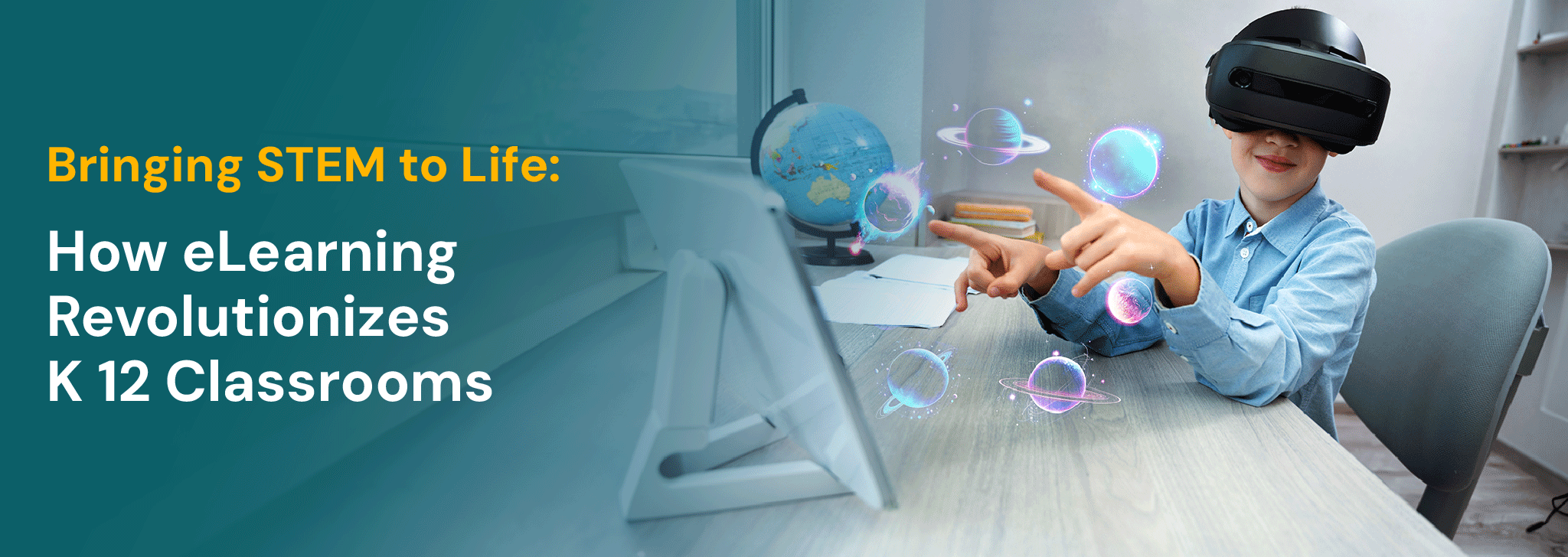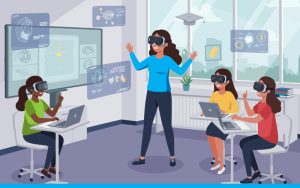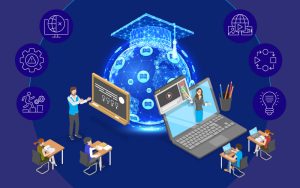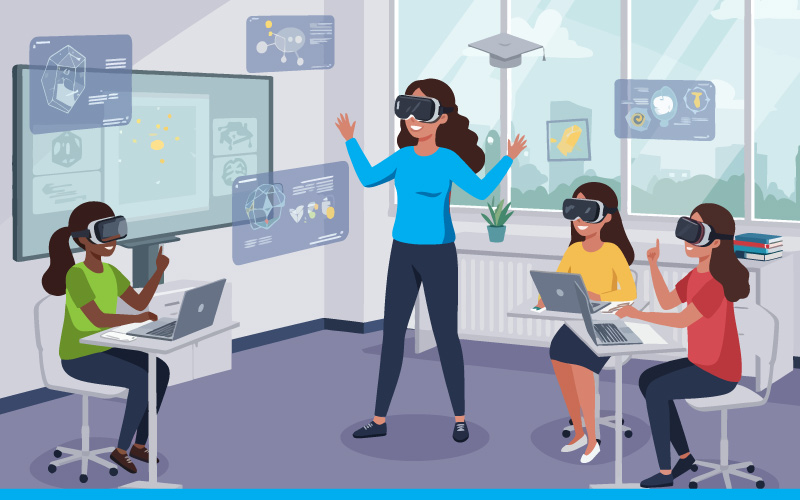STEM education—Science, Technology, Engineering, and Mathematics—has always been about exploration, innovation, and problem-solving. However, traditional teaching methods sometimes struggle to bring STEM concepts to life in ways that are engaging and accessible to all students. This is where eLearning steps in as a game-changer.
By integrating digital tools, interactive simulations, virtual labs, and AI-driven learning platforms, eLearning transforms STEM classrooms into dynamic, immersive environments where students can experiment, collaborate, and develop critical thinking skills in entirely new ways. In this blog, we’ll explore how eLearning is revolutionizing STEM education in K12 classrooms, making it more engaging, inclusive, and effective.
The Challenges of Traditional STEM Education
STEM subjects require hands-on learning, yet traditional classrooms often face several limitations:
- Limited Lab Access: Not all schools have well-equipped science and engineering labs.
- Passive Learning Approaches: Textbook-based teaching can make STEM feel abstract and disconnected from real-world applications.
- One-Size-Fits-All Instruction: Students learn at different paces, but traditional methods often struggle to personalize the learning experience.
- Lack of Exposure to Emerging Technologies: Rapid advancements in AI, robotics, and data science require updated teaching methods that many schools struggle to keep up with.
How eLearning is Revolutionizing STEM Education
1. Making STEM Concepts More Tangible with Virtual Labs & Simulations
One of the most powerful ways eLearning is transforming STEM education is through virtual labs and interactive simulations. These digital tools allow students to:



Examples of virtual STEM tools:


By bringing theoretical concepts to life, these tools make learning more engaging and retention rates higher.
2. Personalized Learning Paths with AI & Adaptive Technologies
eLearning platforms use AI-driven adaptive learning to personalize the STEM learning experience. Instead of a one-size-fits-all curriculum, students can progress at their own pace, focusing on areas where they need more support.

- Real-time feedback helps students correct misconceptions immediately.
- Personalized exercises adjust difficulty levels based on student performance.
- AI-powered tutors offer additional guidance when teachers aren’t available.
Examples:

By tailoring lessons to individual learning speeds and styles, AI ensures no student is left behind.
3. Encouraging Collaboration with Digital STEM Projects
STEM isn’t just about individual learning—it’s about collaborating to solve real-world problems. eLearning tools make it easier for students to work together, share ideas, and build projects in ways that transcend classroom walls.




Examples:


By fostering teamwork, communication, and problem-solving skills, eLearning prepares students for STEM careers where collaboration is essential.
4. Bringing the Real World into the Classroom with Augmented & Virtual Reality (AR/VR)
Imagine students walking through a human cell, exploring Mars, or interacting with a simulated earthquake—this is what AR/VR makes possible in STEM classrooms.

- Immersive 3D learning experiences deepen understanding.
- Hands-on exploration of environments that would otherwise be impossible.
- Engagement increases as students learn through discovery, rather than rote memorization.
Examples:


These technologies make learning more engaging and help students visualize difficult concepts, ensuring better knowledge retention.
5. Breaking Barriers to STEM Learning with Online Accessibility
eLearning makes STEM education more inclusive by removing barriers such as:
✅ Geographical Limitations: Students in remote areas can access world-class STEM courses.
✅ Physical Disabilities: Screen readers, captioning, and hands-free interfaces make STEM learning accessible to all.
✅ Economic Barriers: Free and affordable eLearning resources make high-quality STEM education widely available.
Key initiatives & tools:
📌 Microsoft Immersive Reader – Enhances reading accessibility for students with learning disabilities.
📌 STEM for All – An initiative promoting diverse participation in STEM fields.
By ensuring equal access to high-quality learning resources, eLearning is making STEM education more inclusive and diverse.
Conclusion: The Future of STEM Learning is Digital
eLearning isn’t just supplementing STEM education—it’s revolutionizing it. By integrating interactive simulations, adaptive AI, collaborative tools, AR/VR, and accessible platforms, we can create engaging, inclusive, and future-ready STEM classrooms.
As technology continues to evolve, the possibilities for eLearning in STEM will only grow. Schools and educators who embrace these tools today will help shape the next generation of scientists, engineers, and innovators.
Are you ready to bring STEM to life with eLearning? 🚀 Let’s make the future of education dynamic, engaging, and limitless!
- Debdut Pramanickhttps://www.mitrmedia.com/resources/blogs/author/debdutp/
- Debdut Pramanickhttps://www.mitrmedia.com/resources/blogs/author/debdutp/
- Debdut Pramanickhttps://www.mitrmedia.com/resources/blogs/author/debdutp/
- Debdut Pramanickhttps://www.mitrmedia.com/resources/blogs/author/debdutp/









